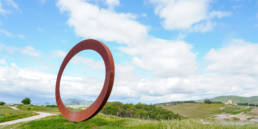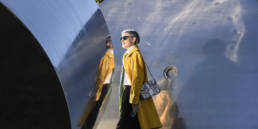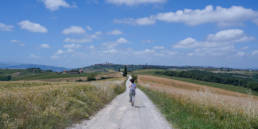
How often do you associate eco-tourism or sustainable travel with the great art cities of Italy? Perhaps not as often as you would with, say, the Amazonian rainforest, a natural area that clearly needs to be preserved. Sustainable tourism can and should, however, be practised everywhere.
The way I see it, sustainable tourism is a combination of environmental awareness with a learning approach. Greater sensitivity towards a people and its culture is a huge part of this, and you’re already halfway there by being on arttrav.
Just a few personal tips for sustainable travel (by no means an extensive list)
Learning
- Be an informed traveler. You are in the right place. Reading up before you go, and while you’re there, helps you understand the culture you’re immersing yourself in.
- Consider taking a course or seminar while you’re in Italy, whether it’s for one day, a week, or an entire semester of study abroad. For example, the British Institute of Florence offers short courses in Italian language, fine art, and art history.
- Respect local cultures: learn about and then try to accomodate local traditions, culture, and foods. When it comes to food, this is particularly easy because you can eat delicious seasonal food in Italy year-round. If you have a self-catering accomodation, consider buying only food grown in Italy. When it comes to cultural habits, observe the locals and try to take up their better habits (but not their bad ones!).
- Participate in an eco-tour outside the city, like those by bike, balloon, foot, or horse offered by De Gustibus. [As their website is in English, you can search for DeGustibus events and tours with english descriptions posted on arttrav.com here.]
- In the city, take a tour with Context Travel, whose sustainable tourism foundation involves specific walks that donate funds to Oltrarno artisans and to saving Venice.
Environment
- Save resources just as you would at home. Do the usual things to save water, turn off lights, avoid using air-conditioning, turn off idling car engines, etc. In Italy, utilities are much more expensive than in North America, so by cutting consumption you are also saving money – either for yourself in your rental apartment, or for the small business owner who pays the bills.
- Go out of your way to recycle. If you’re in a hotel or out on the street, recycling bins are not always easy to find. Please take the responsibility to hang on to your cans, bottles, and newspapers until you can find a place to recycle them. In a bar, bring your empty can to them and say “ricicla per favore!”. In most Italian cities there are large garbage bins that are colour-coded for recycling. If you are in a downtown tourist area you may have to step down a side street to find one. (In Florence: yellow for paper, blue bell shaped things for glass and plastic).
- Reduce packaging and containers. Bring a reusable bottle with you and fill it up with water, either from the tap (Italian city water is perfectly safe, just not always delicious) or from the largest possible bottle of mineral water you can find. I find that the copper-lined Sigg Water Bottles
never get smelly and are easy to keep clean. They are not popular yet in Italy, so it also makes a great conversation piece. I pack my sigg bottle in my suitcase so that it doesn’t get confiscated at airport check-in. I also travel with at least one sturdy plastic container like this one by Lock n’ Lock
for fruits and snacks, I swear by their liquid-proofness.
- In a hotel, do the “keep your towels another day” option. Come on, don’t tell me you change your towels daily at home too!
Please Sign the Responsible Traveler Pledge from Friends of World Heritage
Further reading online:
- A dedicated section of National Geographic Traveler.
- An amusing but bang-on correct list on tripadvisor of “how to avoid upsetting the locals” in Italy is actually a very astute contribution to sustainable tourism.
- Consider offsetting your carbon emissions. Pick the right company through which to do so by reading about it on the Voluntary Carbon Offset Information Portal run by Tufts University Climate Initiative and the Stockholm Environment Institute.
Did I miss something? WHAT ELSE CAN WE DO? Post your tips and ideas on my dedicated page here…! We all need to contribute to make the world a better place.
Recommended products from Amazon.com:
—
Sign up to receive future blog posts by email
Alexandra Korey
Alexandra Korey aka @arttrav on social media, is a Florence-based writer and digital consultant. Her blog, ArtTrav has been online since 2004.
Related Posts
November 17, 2021
My favourite suppliers of Tuscan olive oil
May 20, 2021
Volterra: Art, Wine and Minerals
January 17, 2021





